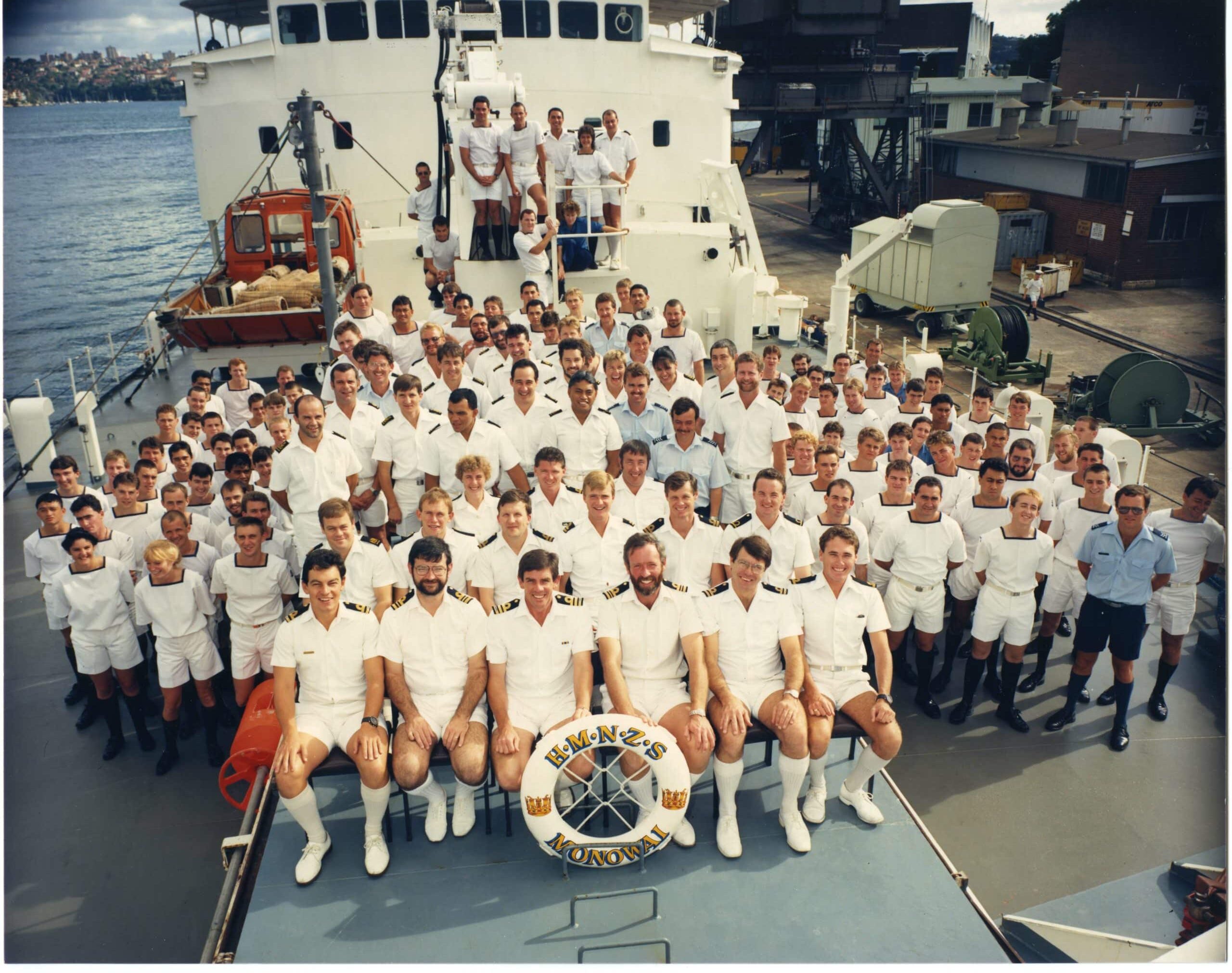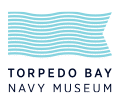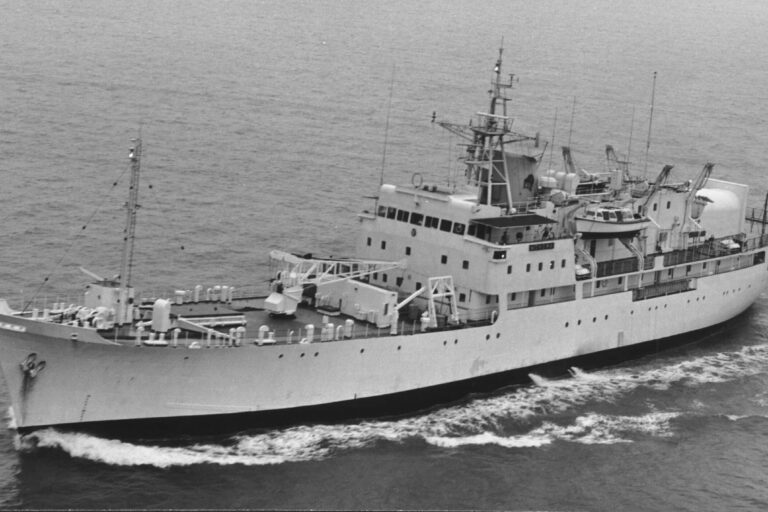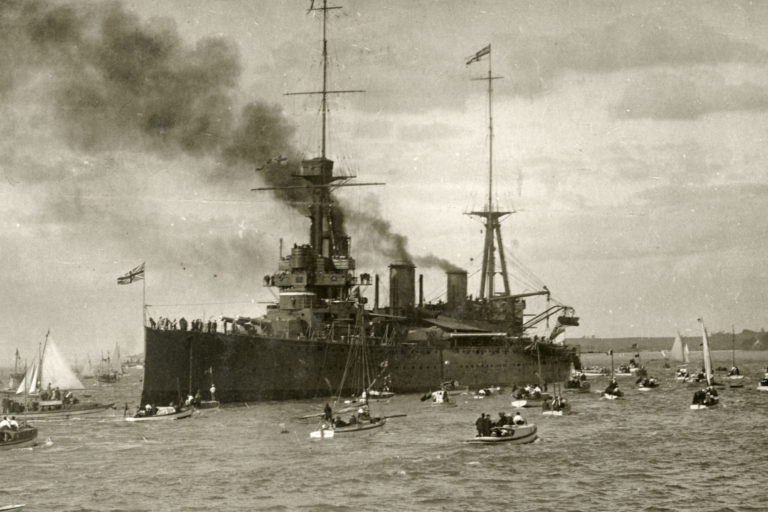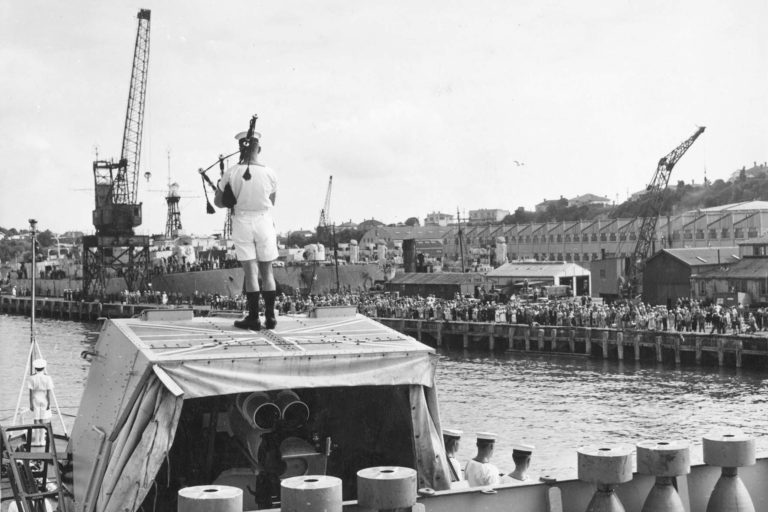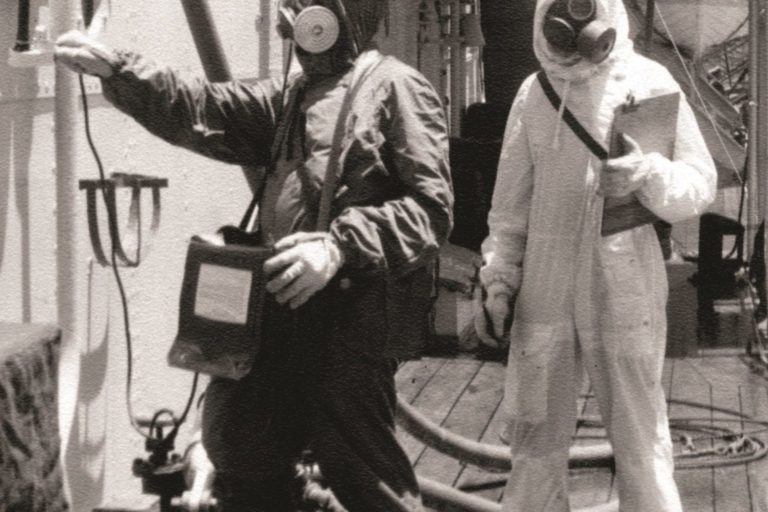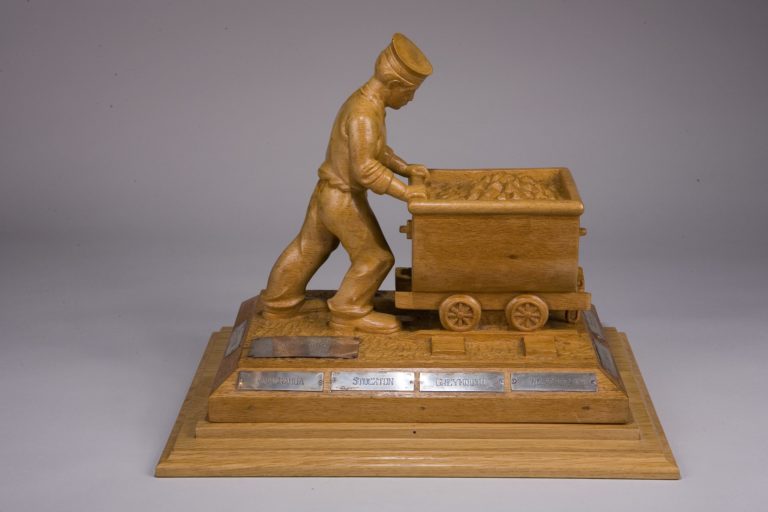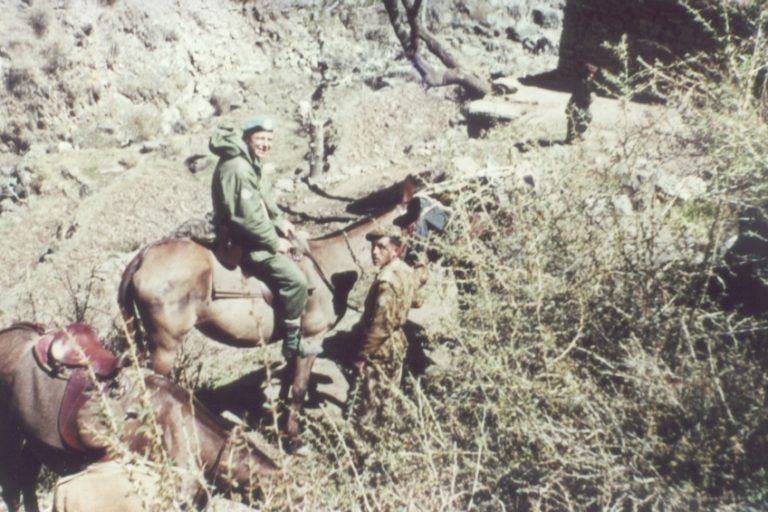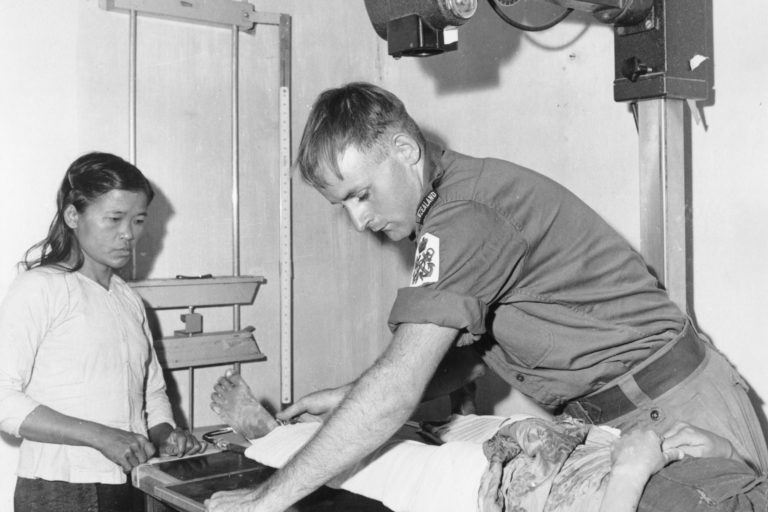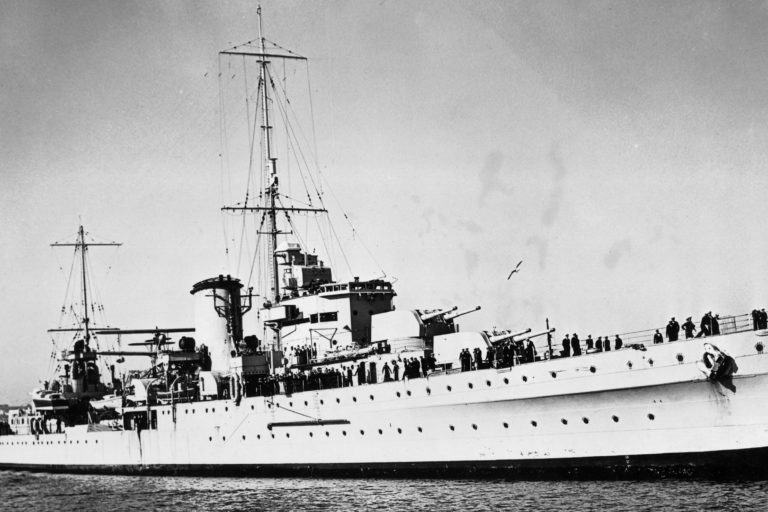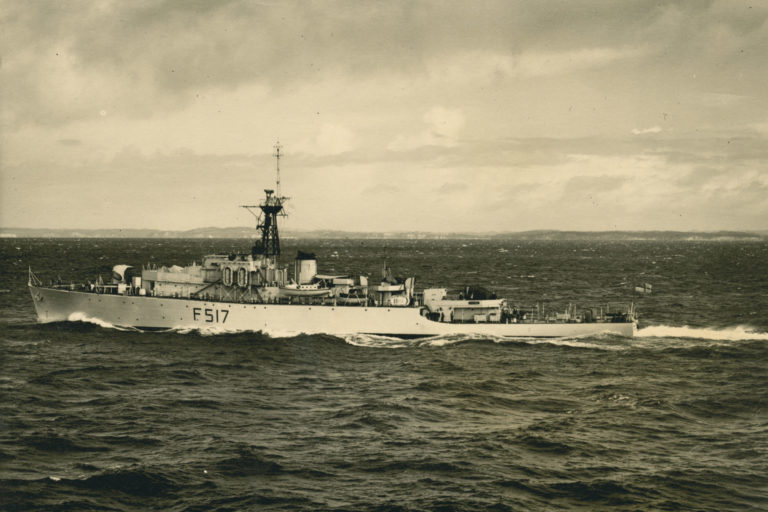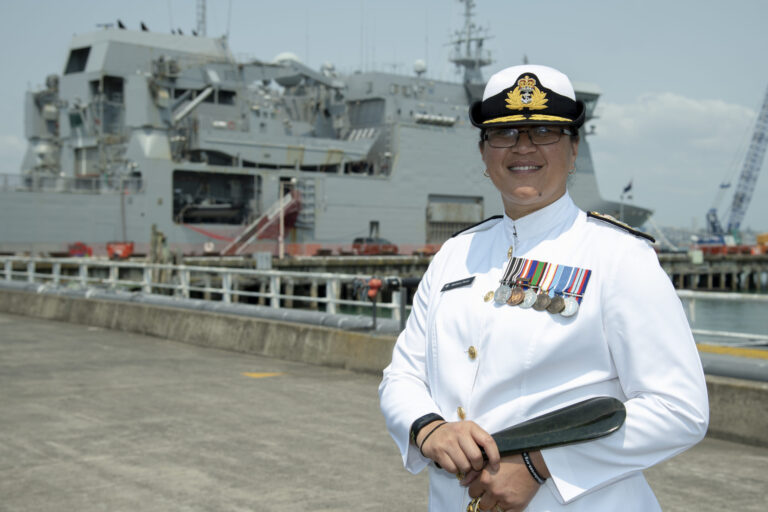Ship Details:
Builder: Grangemouth Dockyard, Firth of Forth Scotland
Launched: 14 April 1960 as Moana Roa
Type: Hydrographic survey vessel
Displacement: 3900 Tonnes
Dimensions: 90.8 x 82.3 x 14.1 x 5.2m
Machinery: Twin shaft diesels = 14 knots
Armament: No weapons fitted at commissioning. 2 x 20mm Oerlikons fitted 1980 for fisheries patrol work.
Aircraft: 1 x Wasp helicopter from 1982
complement: 125 officers and ratings
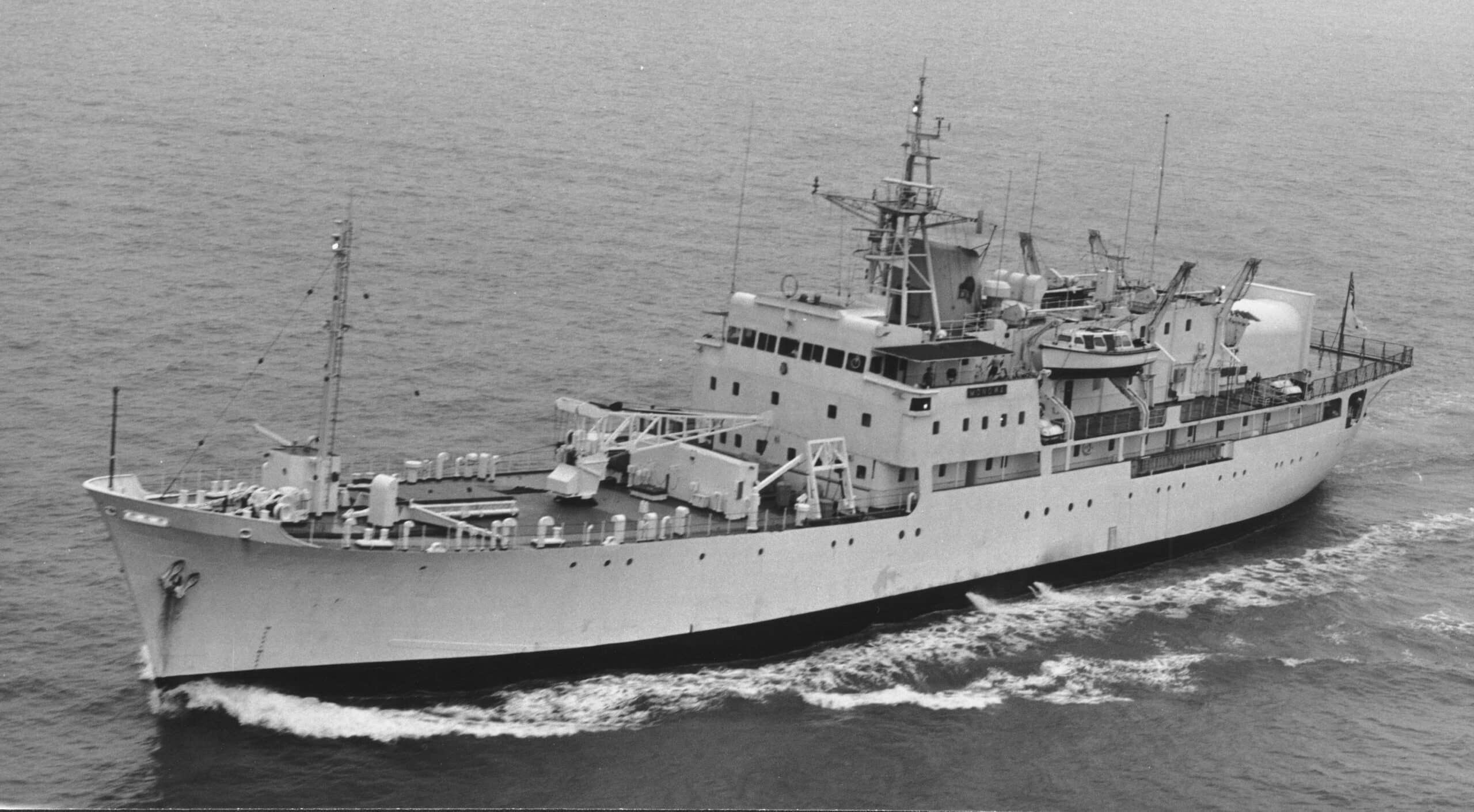
Ship History:
By the late 1960s HMNZS Lachlan was coming to the end of her service. The Minister of Defence sent a letter to the Minister of Marine in 1969 which made the case for a replacement ship. But, in the letter he made the statement that there was little direct benefit to Defence from hydrography in peacetime. This phrase caused a flurry of minutes within Naval Staff firmly contesting this view and reaffirming the intention to retain and nurture a hydrographic service.
Delays continued in making a decision on the replacement for Lachlan. Finally in January 1972 there was the first mention of the conversion of the Moana Roa to a survey vessel.
She was built in Scotland in 1960 for the New Zealand Department of Island Territories to operate a cargo/passenger service between Auckland and the Cook Islands. By 1972 the role for which she was built was becoming redundant, and it was suggested to the RNZN that she could operate as a hydrographic survey vessel for another twenty years. After studies and a hands-on examination of the ship, the Defence Council noted in August 1973 that it would be eminently sensible to accept the proposal to convert Moana Roa as a replacement for Lachlan. The proposal and budget for the conversion were approved by Cabinet in February 1974. Moana Roa was handed over to the RNZN on 15 August 1974, and at the insistence of the Chief of Naval Staff was renamed Monowai, after the armed merchant cruiser that had served in the Second World War. The conversion project was undertaken in Britain. In June 1975 Scott-Lithgow Drydocks was awarded the conversion contract. Monowai was formally commissioned into the RNZN on 1 July 1975 and departed Auckland on the 22nd for Scotland, arriving at Greenock via Suva, Pearl Harbor, Panama, and St Johns on 12 September 1975. Monowai was known within the fleet as the ‘White Ghost’ given her white paint job.
Monowai’s Service:
The conversion project was significant and included adding a helicopter deck, bow propeller unit, additional accommodation and upgraded engines. She would also be fitted with the latest echo sounding, hydrographic plotting and charting equipment.
It was a slow and frustrating project for the RNZN with constant delays in completing the work. This included a fire which burnt out important electrical cables.
Monowai was recommissioned on 4th October 1977. A month of sea trails followed after which she departed Greenock on 7 November 1977, finally arriving back in Auckland on 2 February 1978. On arrival she underwent final fitting out. HMNZS Monowai arrived at Gisborne on 31st March 1978 where she was formally adopted by the city and presented with the charter. Trips to Wellington and Bluff followed where she undertook her first surveying task of the western Foveaux Strait-Fiordland area. She then settled into surveying work and non-surveying work.
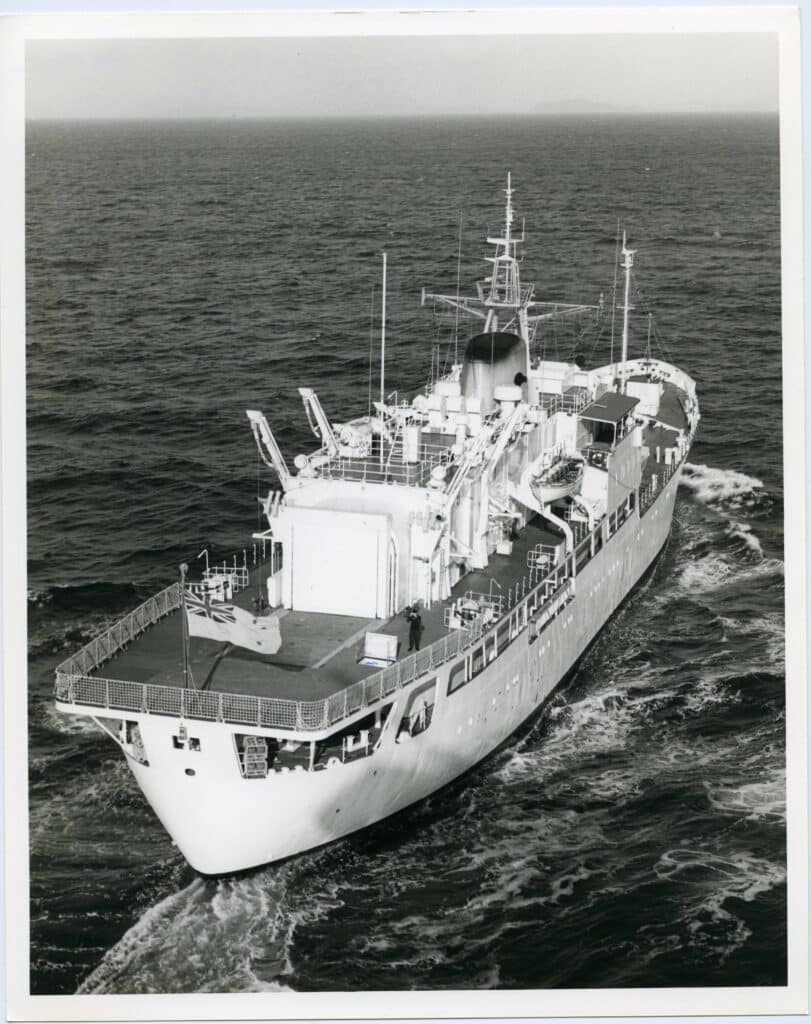
The range of Monowai’s tasks can be seen by her deployment in June 1979 to the South Pacific. Her tasks during this period included: offloading six tonnes of stores to Raoul Island, supporting a meeting of leaders held at the Tokelau Parliament by embarking 50 representatives.
This was followed by representing New Zealand at the independence celebrations for Kiribati and hosting New Zealand’s Prime Minister and 34 other guests for the South Pacific Forum. A trip to Western Samoa with the reef blasting team rounded off the deployment to the South Pacific that year.
On return to New Zealand in October the RNZAF carried out landing training with the Sioux helicopters on Monowai. She would also have practice landings with the Iroquois and on occasions also carried the Wasp helicopter making her the only vessel in RNZN history to have operated all three types of helicopters.
In 1980 she was fitted with two 20mm Oerlikons so that she could operate in the fisheries protection role.
In May of that year, she undertook one of her most unusual tasks and monitored Chinese missile splashdown tests near Tuvalu.
Monowai began a major survey in November 1980 for the planned ANZCAN cable. She spent 115 days at sea and covered some 43,400km, completing the task in March 1981.
Significant Events:
Women at Sea
Monowai is famous in the Royal New Zealand Navy fleet for two significant events. The first is women at sea. In October 1981 a paper suggested that Monowai could be used as a trial vessel for women to go to sea.
In February 1986 the Defence Council authorised the Chief of Naval Staff, Rear Admiral Tempero to offer, ‘temporary sea-going postings…. in noncombatant ship’s’. The plan became official in September 1986. The purpose of the Women at Sea Pilot Study’ (WAPS) was ‘…aimed at determining the difficulties and identifying the solutions concerning the employment of women at sea.’ It was made clear that only non-combatant vessels were to be used for the trial and those women who participated would be volunteers. One officer and twelve to fifteen ratings would comprise the study group. The volunteers needed to be fit for sea duty and be ‘trained to fill a sea billet.’ One advantage that Monowai had for the trial was her layout which could be modified to accommodate female officers and ratings. In December 13 female ratings and one officer joined Monowai for the beginning of the WAPS programme designed to run for three years. Nine of the ratings had a brief acquaint period in the ship late in October on the ship’s passage from Auckland to Lyttelton. Although some administrative aspects of employing women at sea needed further analysis, the practical aspects of the first trial proved successful and the employment of women at sea in non-combatant vessels with suitable facilities continued.
Search and Rescue
The second significant event was Monowai’s service history was her involvement in search and rescue operations in South Pacific. On 4 June Monowai was ordered to offer assistance to a yacht in distress and proceeded through very heavy seas. On the morning of the 5th Monowai faced seas running at about 10 metres and winds of around 55 knots gusting to 75 knots. As it turned out the first yacht she encountered was the Australian catamaran Ramtha and after four hours of effort the crew of two were recovered safely. Monowai then proceeded toward her next rescue. Due to the extreme weather conditions Monowai was operating in two of the 500kg metal weights for the side scan sonar were washed overboard. Two days later Monowai located a second yacht in distress, Pilot and it was decided to use the rigid hull inflatable boat (RHIB) in a rolling sea to successfully recover two crew from the American yacht. That afternoon Monowai was directed to provide assistance to the dismasted New Zealand yacht Silver Shadow. Conditions had worsened but it was decided to use the RHIB again to recover the crew. Despite the heavy seas, and swamping of the RHIB, the crew including the injured skipper were successfully recovered and brought back to Monowai.
The ship was then ordered to carry out a search for another missing yacht. This time she used the Wasp she was carrying, to assist in the search. After two days of fruitless searching, Monowai with the eight survivors headed towards Tonga and while on passage she encountered the yacht that she had been initially tasked with searching for back on 4 June. In October Chief of Naval Staff Rear Admiral Tempero issued a commendation to the ship’s company for their efforts during June.
Historic Survey:
On the 7 March 1995 the re-survey of Pickersgill began. Up until that time the chart by the great navigator and explorer, James Cook, was in use. The chart lasted for 224 years, attesting to the astonishing accuracy of his surveying and chart drafting. Jointly carried out by Monowai and the Inshore Survey Craft HMNZS Takapu and Tarapunga, a modern survey was needed to accommodate more tourist vessels, cruise liners, and new GPS technology. The re-survey was led by Commander Larry Robbins. The survey party used major historical sites as survey markers and to conduct a tide gauge to commemorate the achievements of the previous, great explorers.
Monowai gave 21 years of sterling service to the RNZN as a hydrographic survey ship and support ship in the South Pacific and New Zealand waters. She was replaced by HMNZS Resolution in 1998 and after a final visit to Gisborne at the beginning of April, she returned to Auckland where she was formally decommissioned from the RNZN on 24 April 1998. Monowai was sold in October 1998 to British owners and left New Zealand.
